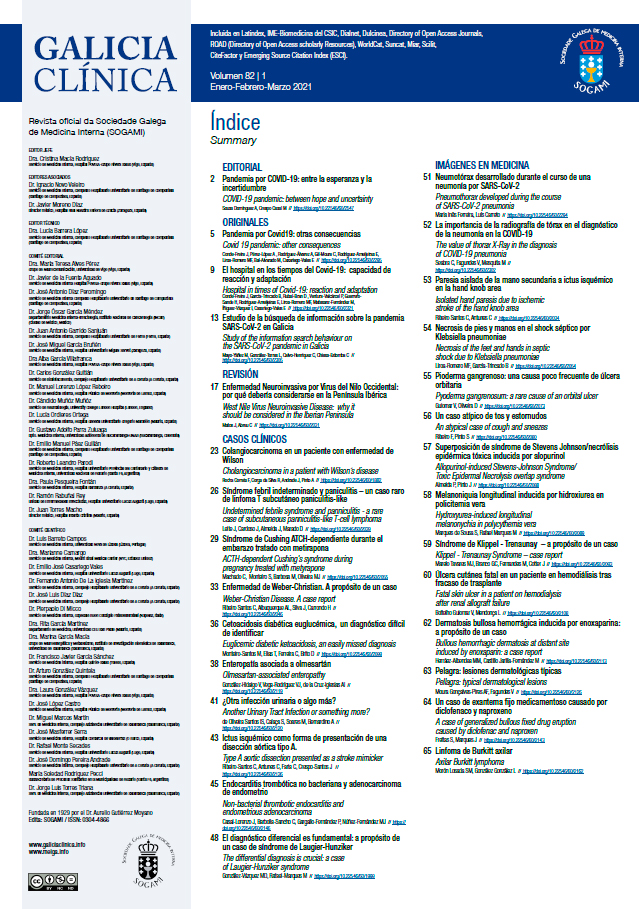Abstract
Pellagra, as all vitamin deficits, is still a prevalent disease in developing countries. In western Europe there is no data about its prevalence. The few cases reported are associated to alcoholism or malabsorption.
The authors present a case of a 37-year-old man, homeless, with history of alcohol abuse, who lives on social assistance. He was admitted to the emergency department after the appearance of non-pruriginous lesions of the skin on his face, neck and upper limbs, which appeared 1 month before associated with behavioral changes (meaningless speech) and diarrhea, without fever. He denied any report of burn or exposure to chemical products.
On admission he had normal blood pressure and no fever. The physical examination presented a photosensitive desquamative dermatitis on his face, dorsal part of the neck, forearms and hands and the neurologic exam was normal. The laboratory tests were normal (hemogram, renal function, ionogram, C-reactive protein); serological markers for HIV negatives and a cerebral computed tomography scan with no changes. Treatment with niacin was started with progressive improvement of cutaneous lesions. He presented no diarrhea after the third day of treatment. He had also folic acid deficiency and was on supplementation therapy.
The neurological, dermatological and gastrointestinal involvement defines the niacin deficiency – also called: Pellagra. The response to treatment with niacin confirms the diagnosis of pellagra, as seen in the evolution of the lesions along the time of treatment.
© 2021 Galicia Clínica.
Complete article | Pdf article


